![[field:title/]](/uploads/allimg/250630/2-2506301A1210-L.png)
Soil sieve for lab is an important tool for soil particle analysis, mainly used to separate soil particles of different particle sizes. This sieve is usually made of metal (such as stainless steel) with precise mesh size to ensure the accuracy of the screening results.
Selling points:
① Provide sieve configurations from 2 mesh to 500 mesh or even finer, which can meet the particle size analysis needs of coarse particles to fine particles of soil
② The sieve adopts 304 stainless steel woven mesh or copper mesh, which is wear-resistant and corrosion-resistant
③ Multi-layer sieve frames can be stacked for graded screening, with sieve cover and receiving tray for easy operation and sample collection
Soil sieve for lab is a standard sieving tool for analyzing soil particle composition and particle size distribution, which is widely used in experimental research in agriculture, geology, construction and environment. The sieve is usually composed of multiple metal screens, which are arranged in descending order according to the mesh size (i.e. the number of mesh holes per inch), such as 4 mesh (4.75mm), 10 mesh (2mm), 40 mesh (0.425mm), 100 mesh (0.15mm) to 200 mesh (0.075mm) or even finer, which can screen soil particles of different particle sizes step by step.
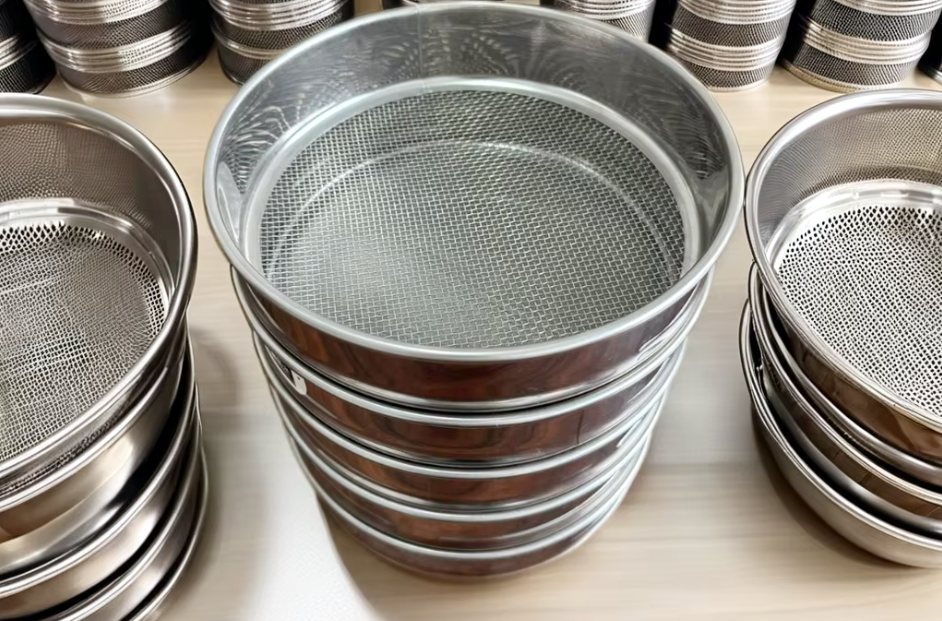
The soil itself has a variety of particle types, often containing sand, silt and clay. Particles of different particle sizes will affect the permeability, water retention and tillage performance of the soil. The lab can accurately determine the content of each particle size level in the soil by using a soil sieve to dry or wet sieve the sample, thereby evaluating the soil structure and classification. The soil sieve for lab is often used in conjunction with a slap screen or an electric vibrating screen to improve screening efficiency and analysis accuracy. It is an important basic tool for soil physical and chemical property testing.
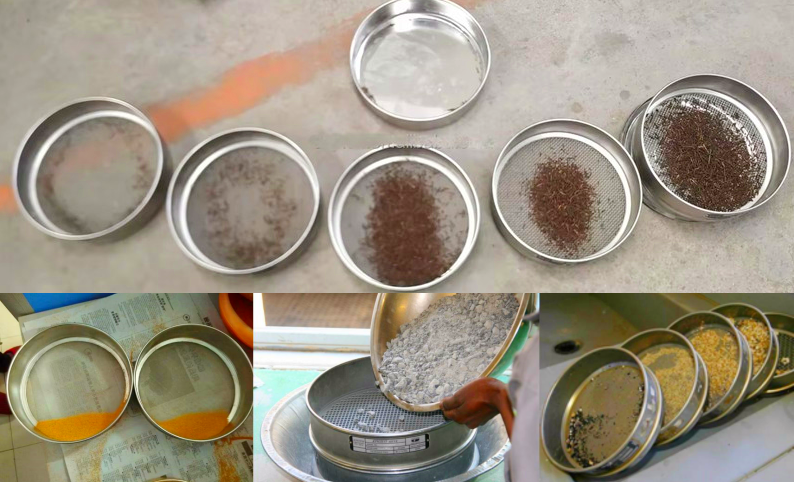
Soil sieve for labs are tools used for grading, screening, analyzing and testing soil samples. According to the material of the sieve, there are wire woven mesh sieves, which are generally square holes ranging from 2.36 mm to 0.02 mm; perforated plate sieves, which have round holes and square holes, with meshes ranging from 0.2 to several hundred millimeters, mainly used for large meshes; electroformed sieves, which are mainly used in high-precision occasions.
According to the purpose: there are conventional standard sample sieves, chemical special sieves, soil special sieves, stone special sieves, sand special sieves, cement special sieves, asphalt special sieves, coal sample special sieves, metallurgical ore inspection sieves, etc.
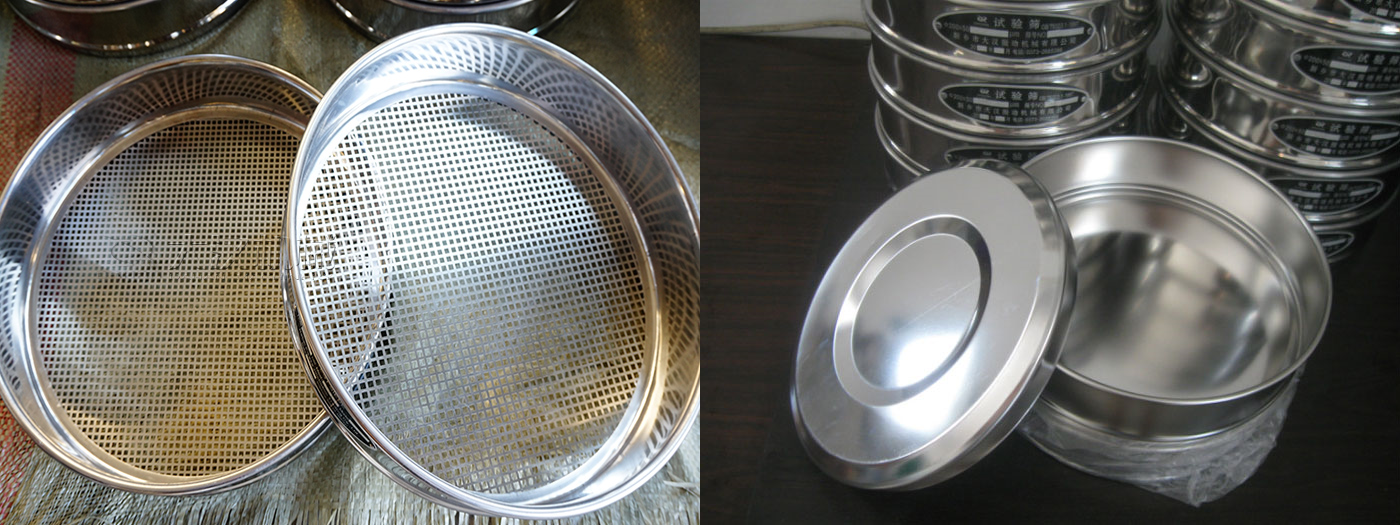
Sieve frame size: common ones are φ200mm, φ300mm, φ400mm, etc.
Sieve size: The coarse sieves commonly used in geotechnical tests are generally round holes with apertures of 100mm, 80mm, 60mm, 40mm, 20mm, 10mm, 5mm, and 2mm; the fine sieves are generally square holes with equivalent apertures of 2.0mm, 1.0mm, 0.5mm, 0.25mm, 0.10mm, and 0.075mm.
Soil sieve for labs are primarily differentiated by their material and mesh shape. Stainless steel, nylon, and brass sieves are selected primarily based on their material properties, while woven mesh, perforated, and round-hole sieves are selected based on mesh shape and particle size. Each sieve type has specific applications, advantages, and disadvantages.
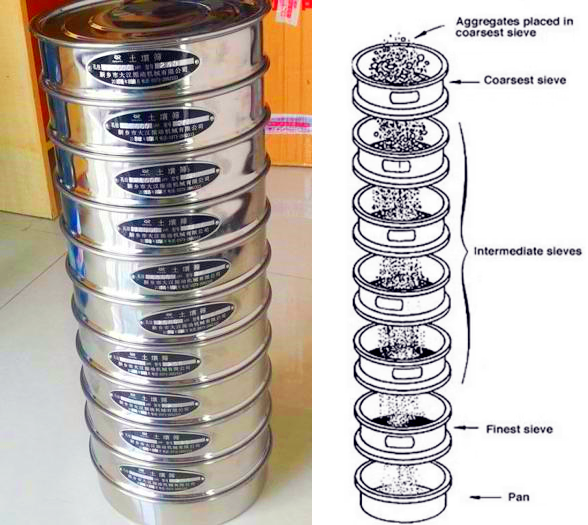
The soil sieve for lab mainly uses the aperture of the sieve to separate soil particles. Place the soil sample on the sieve and vibrate, shake, and other methods to make the soil particles pass through the holes of the sieve. Particles smaller than the sieve aperture will fall through the sieve into the next layer (if it is a nested sieve) or the collection container, while particles larger than the aperture will remain on the sieve.
For example, when a soil sample is graded by particle size, a sieve with a larger aperture (such as 5mm) is first used to screen out coarse particles such as gravel, and then the remaining soil is further screened with a sieve with a smaller aperture (such as 0.5mm) to separate soil particles of different particle size ranges, thereby providing accurate samples for subsequent soil analysis (such as soil texture analysis).
|
Sieve Diameter |
Aperture |
Material |
|
φ200mm |
0.020-8.0mm |
Stainless Steel |
|
φ300mm |
0.020-8.0mm |
Stainless Steel |
|
Material: stainless steel Diameter:Φ200mm/300mm/450mm |
|
|
Mesh |
Aperture(mm) |
|
5 |
4 |
|
6 |
3.5 |
|
8 |
2.5 |
|
10 |
2 |
|
12 |
1.9 |
|
14 |
1.43 |
|
16 |
1.25 |
|
18 |
1 |
|
20 |
0.9 |
|
24 |
0.8 |
|
26 |
0.71 |
|
28 |
0.65 |
|
30 |
0.60 |
|
32 |
0.56 |
|
35 |
0.5 |
|
40 |
0.45 |
|
45 |
0.4 |
|
50 |
0.355 |
|
55 |
0.315 |
|
60 |
0.28 |
|
65 |
0.25 |
|
70 |
0.22 |
|
75 |
0.2 |
|
80 |
0.18 |
|
90 |
0.17 |
|
100 |
0.154 |
|
110 |
0.135 |
|
120 |
0.125 |
|
130 |
0.111 |
|
140 |
0.11 |
|
150 |
0.10 |
|
160 |
0.098 |
|
170 |
0.091 |
|
180 |
0.088 |
|
190 |
0.080 |
|
200 |
0.074 |
|
220 |
0.065 |
|
240 |
0.063 |
|
250 |
0.061 |
|
260 |
0.057 |
|
280 |
0.055 |
|
300 |
0.054 |
|
320 |
0.048 |
|
325 |
0.045 |
|
340 |
0.041 |
|
360 |
0.040 |
|
400 |
0.0385 |
|
500 |
0.03 |
|
600 |
0.025 |
|
700 |
0.02 |
|
800 |
0.015 |
|
Model |
sieve frame diameter |
sieve frame height |
sieve mesh range |
material |
applicable scenarios |
|
SS-200 |
200mm |
50mm/75mm |
2 mesh~500 mesh |
stainless steel/brass |
conventional dry sieve analysis |
|
SS-300 |
300mm |
75mm |
4 mesh~200 mesh |
stainless steel/brass |
large sample screening |
|
SS-100 |
100mm |
25mm/40mm |
10 mesh~400 mesh |
stainless steel |
small sample testing |
|
Mesh number (mesh) |
corresponding aperture (mm) |
applicable analysis particle size |
|
4 mesh |
4.75 |
coarse-grained soil |
|
10 mesh |
2.0 |
medium sand/fine sand |
|
40 mesh |
0.425 |
silt/fine powder |
|
100 mesh |
0.15 |
silt/clay |
|
200 mesh |
0.075 |
clay boundary particle size |
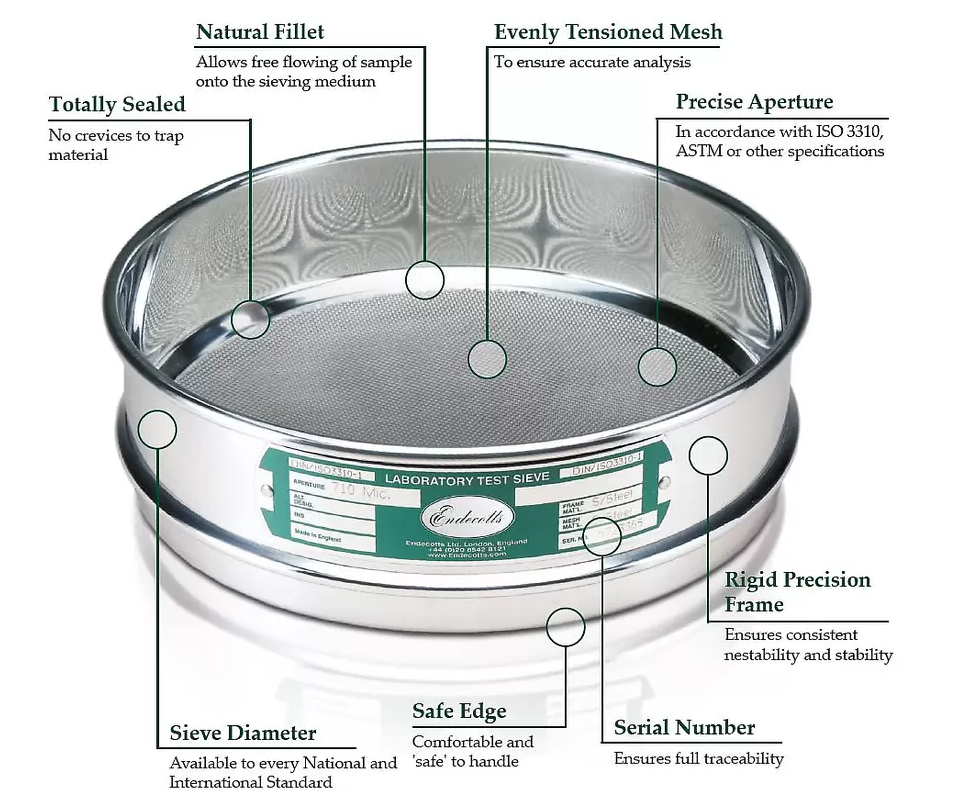
A soil sieve for lab use typically consists of a sieve frame and a sieve mesh. The sieve frame, typically a round or square metal frame, secures the sieve mesh and maintains its shape and stability. The sieve mesh, the core component of the sieve, consists of a woven mesh or perforated plate with precise apertures. It is responsible for separating particles in the soil sample by size. Furthermore, for ease of use, the sieve frame is often designed with stacking slots on the sides, allowing multiple sieves of varying apertures to be stably stacked together.
Screen: This is the core component of the soil sieve, usually made of metal (such as stainless steel). The aperture size of the sieve varies, and the common apertures are 0.1mm, 0.25mm, 0.5mm, 1mm, 2mm, 5mm, etc. Different apertures are used to separate soil particles of different particle sizes. For example, a sieve with a 0.1mm aperture can be used to screen out very fine soil particles, such as clay particles, while a sieve with a 5mm aperture can be used to separate larger coarse particles such as gravel.
Screen frame: The sieve frame plays the role of supporting the sieve, and is generally made of metal, with certain strength and stability. It is usually round or square, and the shape and size will be determined by the size of the screen. For example, a round screen frame with a diameter of 20cm can be matched with a screen of the corresponding size for easy operation and storage.
Connecting parts: If it is a set of screens (multiple screens are stacked together), there will be connecting parts to fix each screen. These connecting parts can be structures such as buckles and bolts to ensure that the screens will not loosen during the screening process and ensure the accuracy of the screening.
Soil sieve for labs are important tools for soil research and analysis. Their role is mainly reflected in the classification of soil particles, laying the foundation for subsequent experiments, and assisting in the evaluation of soil properties.
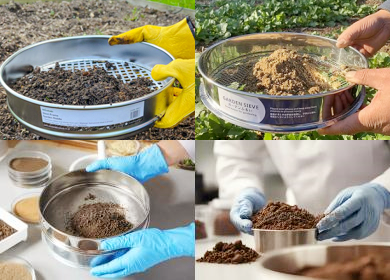
Accurate classification of soil particles: Use sieves with different apertures to separate particles in soil samples by size. For example, use a 2mm sieve to distinguish coarse particles (on the sieve) and fine particles (under the sieve), and then use fine sieves (such as 0.5mm, 0.25mm, etc.) to further subdivide particles with smaller particle sizes.
Provide a basis for soil physical property analysis: weigh the mass of soil samples in each sieve layer after sieving, calculate the content and cumulative content of different particle groups, draw gradation curves, and then obtain characteristic particle sizes (such as effective particle size, control particle size) to evaluate the quality of soil grading (such as whether it is uniform, whether it has good permeability and compaction).
Support soil chemistry and biology research: prepare uniform samples for chemical analysis and separate specific particles for biological experiments. The sieved soil particles are more uniform, which can reduce the chemical analysis errors caused by differences in particle size. For example, when studying the distribution of soil microorganisms in particles of different particle sizes, soil sieves can be used to separate soils of different particle sizes, and then analyze the relationship between microbial community structure and particle characteristics.
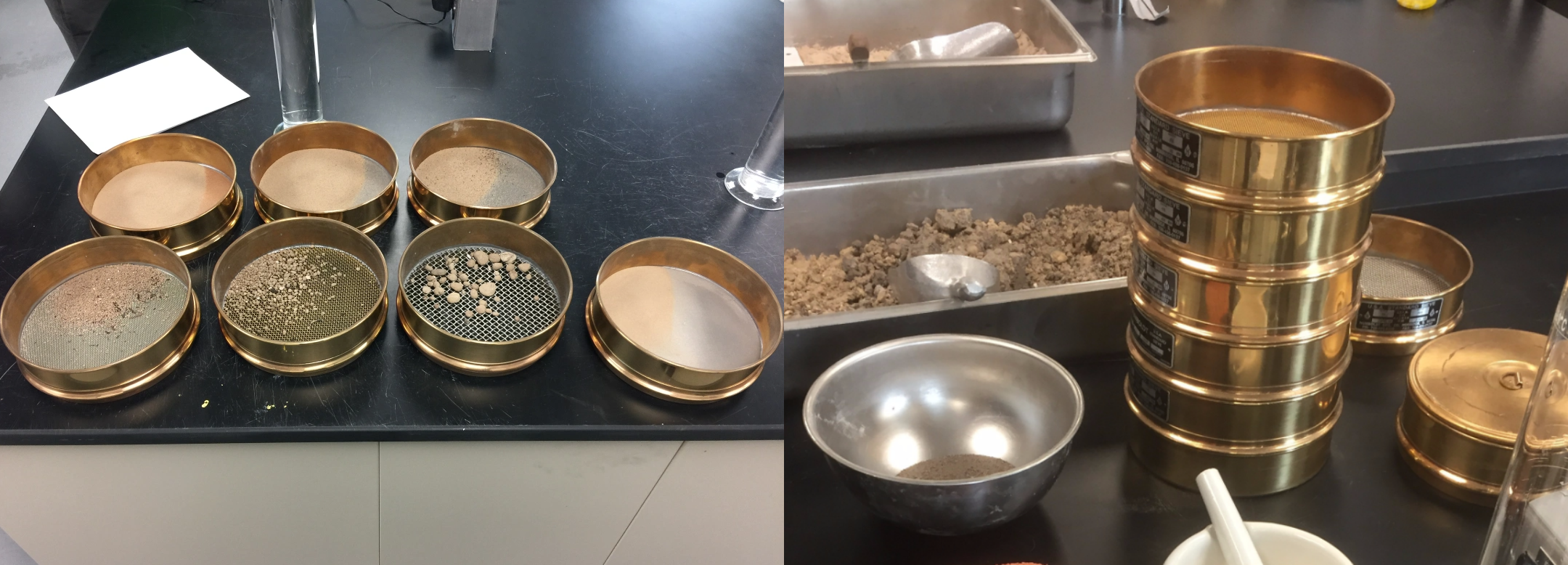
Soil sieve for lab is mainly used for particle size analysis and pretreatment of soil samples, and has important applications in agriculture, environmental science and geological research. Through sieves with different apertures (such as 0.075mm to 4mm), the soil sieve can effectively separate sand, silt and clay particles in the soil, determine their proportions, and provide data support for soil classification, fertility assessment and land use planning. For example, in agricultural research, soil sieves help analyze soil texture, determine its water retention and air permeability, and guide crop planting; in environmental monitoring, soil sieving can remove impurities such as stones and plant residues, prepare pure samples for detecting heavy metals or pollutants; in geological research, soil sieves are used to study sediment particle size distribution and reveal the formation process of landforms
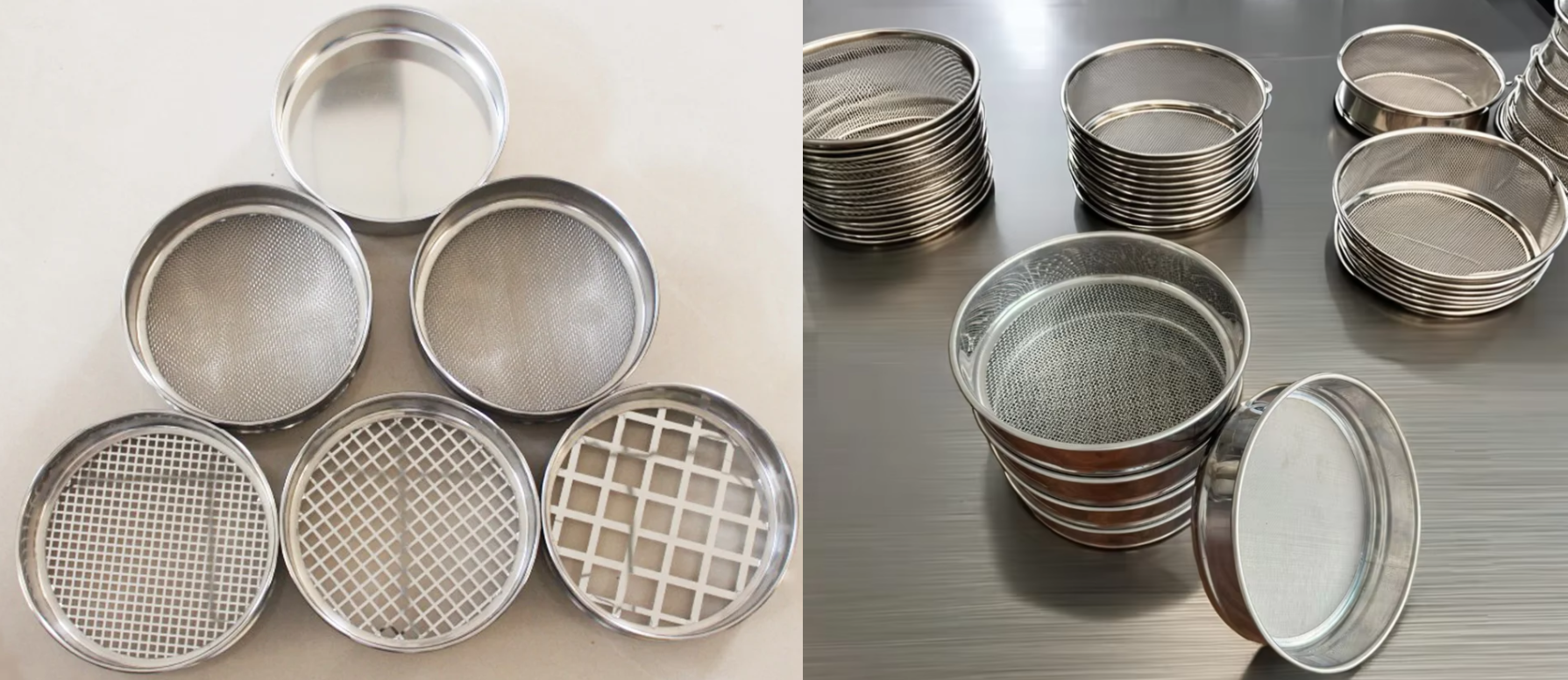
Cleaning soil sieve for labs is a key step to ensure accurate screening results and prevent cross-contamination. Immediately after use, remove soil particles remaining on the sieve with a soft brush (such as a nylon brush) or compressed air. Avoid scratching with hard objects to avoid damaging the sieve.
Rinse the sieve under running water. Suitable for stainless steel or brass sieves. For fine particles, gently scrub the sieve holes with a soft brush to ensure that there is no blockage. If the soil contains clay or organic matter, soak it in warm water (to avoid hot water deforming the sieve) for 5-10 minutes and then rinse.
After cleaning, wipe it dry with a clean dust-free cloth, or place it in a ventilated place to dry naturally. Avoid high temperature baking to prevent the sieve from deforming. Ensure that it is completely dry to prevent rust or residual moisture from affecting the next use. Check whether the sieve is damaged or deformed. After confirming that the aperture is not blocked, store it in a dry, dust-proof cabinet and avoid heavy pressure when stacking.
Take soil from air-dried loose soil samples using the quartering method to make the sample representative.
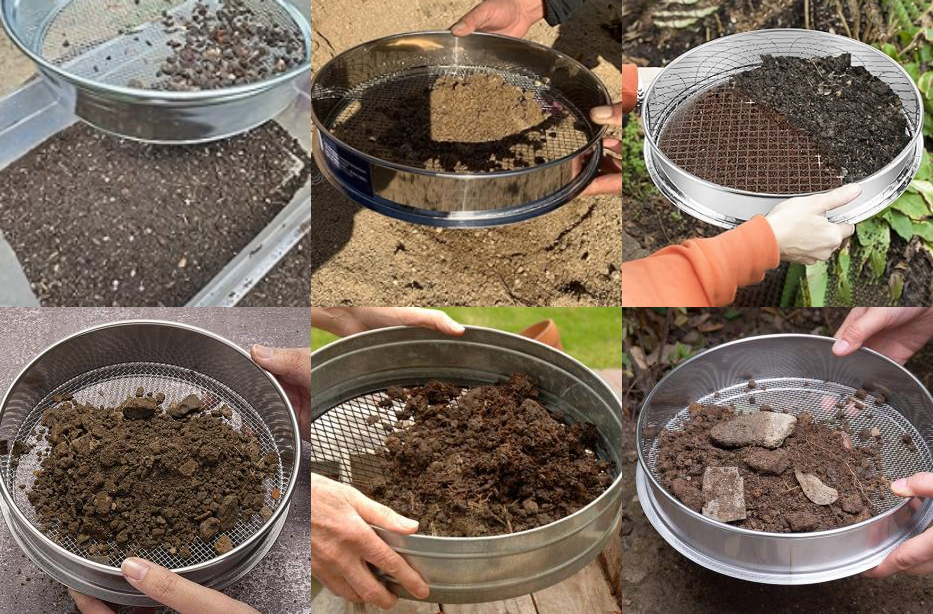
Pass the sample through a 2mm sieve and weigh the mass of soil above and below the sieve. Take the 2mm soil above the sieve and pour it into the top sieve of the coarse sieves stacked in sequence, take the 2mm soil below the sieve and pour it into the top sieve of the fine sieves stacked in sequence, and stack the analytical sieves from top to bottom with the aperture from large to small.
Put the sieve with soil sample into the soil sieve for lab, and fully sieve until the diameter of soil particles on each sieve is larger than the sieve hole diameter. Generally, shake the sieve for 15-30 minutes. Starting from the sieve with the largest aperture, take off each sieve in sequence, weigh the soil left on each sieve, accurately to 0.1g, and record the data. Calculate the particle group content and cumulative content, draw the gradation curve, obtain each characteristic particle size, analyze the gradation of the soil, and name it according to the specification.
Test Analysis Sieve is a sieve for separating mixtures. It mainly makes the mixture of particles of different...
Sieve Analysis Test is mainly used for grading the particle size composition of various powder materials,...
Soil Test Sieve can be used for soil grading, screening, analysis, testing, filtering various soils, widely used...
Standard Sieves standard sieve is a tool for particle size classification and particle size detection of material...
Size sieve for soil mainly refers to the sieve frame diameter (commonly used 200mm, 300mm, etc.) and the sieve hole size (ranging from 0.075mm to 60mm). The sieve frame diameter is ...
Soil sieve prices range from $3 to $500. A soil sieve is a tool used to separate materials such as soil, sand, and compost by particle size. It is used in a variety of applications,...
The primary function of a perforated plate soil sieve is to analyze and separate various types of granular materials. Using precisely controlled pore sizes, a mixed sample is separa...
Standard Test Sieve is a commonly used particle analysis tool in laboratories and industrial sites. Its Sizes specification is the basis for ensuring the accuracy and comparability ...
Are you interested?
![]()
Then we look forward to hearing from you
Contact Us
Industrials
Yanjin county forest park gate to the west 1000 meters north road sitemap
